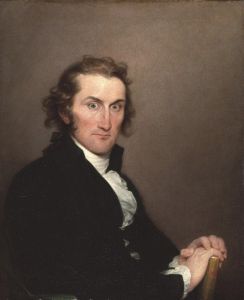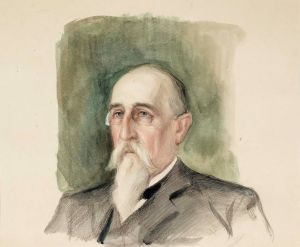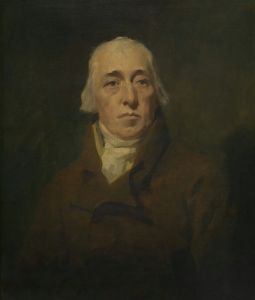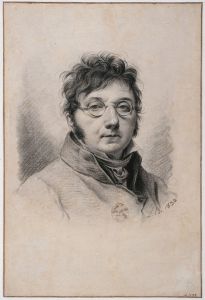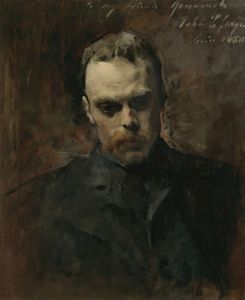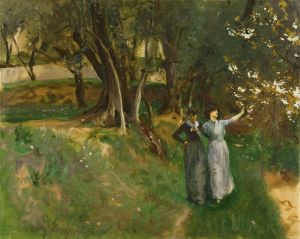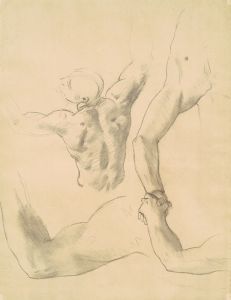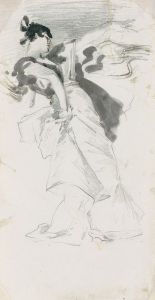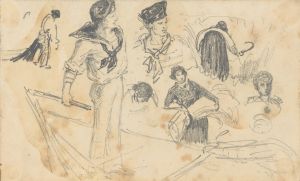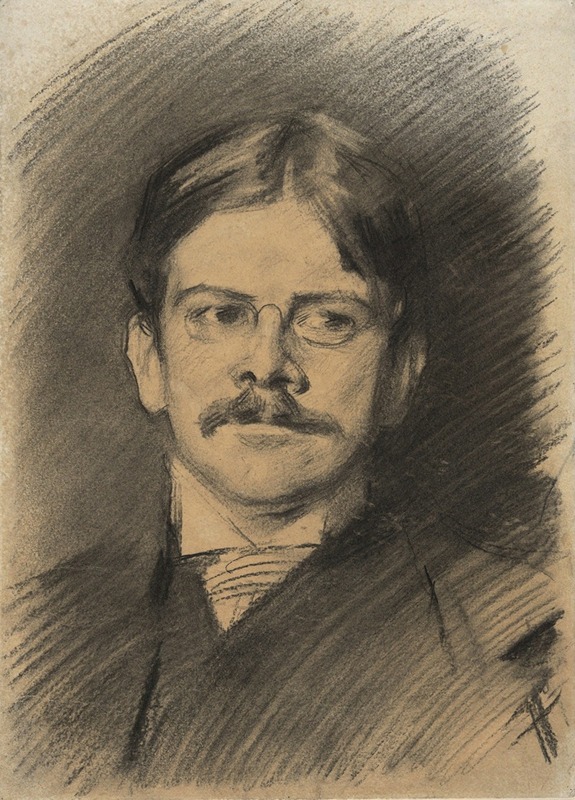
Portrait of Edwin Austin Abbey
A hand-painted replica of John Singer Sargent’s masterpiece Portrait of Edwin Austin Abbey, meticulously crafted by professional artists to capture the true essence of the original. Each piece is created with museum-quality canvas and rare mineral pigments, carefully painted by experienced artists with delicate brushstrokes and rich, layered colors to perfectly recreate the texture of the original artwork. Unlike machine-printed reproductions, this hand-painted version brings the painting to life, infused with the artist’s emotions and skill in every stroke. Whether for personal collection or home decoration, it instantly elevates the artistic atmosphere of any space.
The "Portrait of Edwin Austin Abbey" is a notable work by the renowned American artist John Singer Sargent. Painted in 1896, this portrait captures the likeness of Edwin Austin Abbey, an esteemed American painter and illustrator known for his depictions of Shakespearean and Victorian subjects. Sargent, celebrated for his portraiture, was a contemporary and friend of Abbey, and this painting is a testament to their mutual respect and admiration.
John Singer Sargent (1856–1925) was one of the leading portrait artists of his time, known for his ability to capture the character and essence of his subjects with remarkable skill and sensitivity. His portraits are characterized by their exquisite detail, dynamic compositions, and the use of light to enhance the subject's presence. Sargent's work is often associated with the grand manner of portraiture, a style that emphasizes elegance and sophistication.
Edwin Austin Abbey (1852–1911) was a prominent figure in the art world during the late 19th and early 20th centuries. He gained fame for his illustrations in Harper's Magazine and his large-scale mural projects, such as those in the Boston Public Library and the Pennsylvania State Capitol. Abbey's work often drew inspiration from literature, particularly the plays of William Shakespeare, and he was known for his meticulous attention to historical detail.
The portrait of Abbey by Sargent is a striking example of Sargent's ability to convey the personality and stature of his subjects. In this painting, Abbey is depicted seated, exuding a sense of calm confidence. Sargent's use of light and shadow highlights Abbey's facial features, capturing the intensity and intelligence of his gaze. The background is rendered in a muted palette, ensuring that the focus remains on Abbey himself.
Sargent's technique in this portrait is exemplary of his broader approach to portraiture. He employs loose, fluid brushstrokes that suggest detail rather than delineate it explicitly, a hallmark of his style that allows for a sense of movement and life within the painting. This approach not only captures the physical likeness of Abbey but also hints at his creative spirit and intellectual vigor.
The "Portrait of Edwin Austin Abbey" is housed in the Yale University Art Gallery, a testament to both artists' connections to the institution. Abbey had studied at the Pennsylvania Academy of the Fine Arts, and Sargent's works are held in numerous prestigious collections worldwide. This portrait is a significant piece within Sargent's oeuvre, reflecting his mastery of the portrait genre and his ability to immortalize his contemporaries with grace and insight.
Overall, the "Portrait of Edwin Austin Abbey" stands as a remarkable intersection of two influential artists of the American art scene. It not only serves as a visual record of Abbey's appearance but also as a reflection of the artistic and cultural milieu of the time. Through Sargent's skilled hand, Abbey's legacy is preserved, offering viewers a glimpse into the life and character of a man who contributed significantly to the arts.





